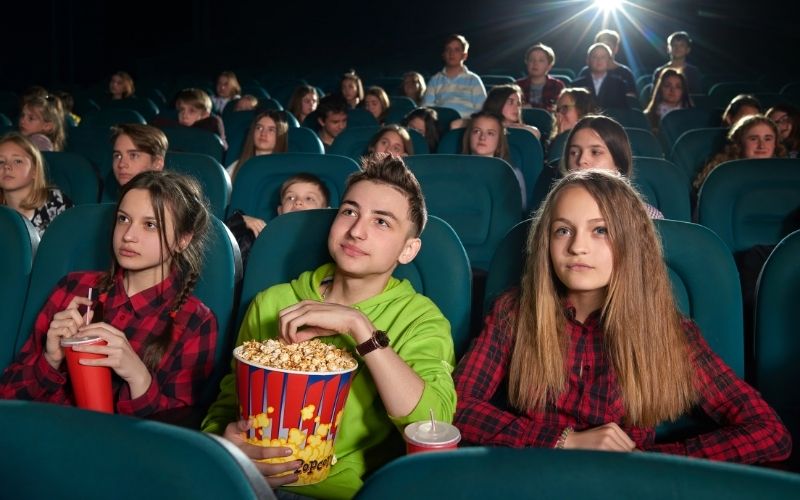My middle-schooler really wants to see a new movie that’s just come out, but it’s rated R. All of his friends have seen it and he’s feeling left out. I read about the movie online and it sounds like it has some mature themes, language, and light drug use. Is it okay to take him to see the movie? My partner says no, but I am not sure what the harm is.
– Middle School Muddled
Dear Muddled,
Deciding what media to expose your child to, and when, is a constant struggle for parents. Movie ratings are not a scientific measure of what is developmentally optimal for kids and teens, but a subjective determination of what parents are likely to accept their children seeing based on current societal norms. Research even indicates that G-rated and PG-rated movies can create more distress for children than R-rated movies, which often receive their ratings due to values-based concerns rather than considerations of developmental appropriateness. If your son is bugging you to see a movie you’re not sure is appropriate, here are some strategies for deciding and, if you decide to let him watch it, for conversations to have after:
Talk about why he wants to see the movie.
The R-rating doesn’t ban children under 17 from a movie, it restricts them to watching it with a parent or guardian (and includes a recommendation that parents and guardians learn more before allowing their child to see the movie). In many cases, the rating restriction presents a great opportunity, not to protect children from difficult content, but to encourage parents and kids to experience and discuss important issues together.
Make an event of watching the movie together.
If, after reading about the movie and its themes, you believe it’s something he can handle and productively engage with, watch the movie together. Each of you will bring a different perspective on and interpretation of the movie based on your own life experiences.
After watching the movie, ask your child to share his feelings:
- What did he like and not like about the movie?
- What didn’t he understand?
- Did he like it as much as he thought he would? Why or Why not?
- What does he think about each character’s actions and motivations?
Asking questions and talking about the movie can help him process the movie well as build his media literacy skills. You can enrich the discussion by talking about how the movie made you feel, what you liked, and what concerned or confused you.
Take care to address sexual and substance based themes with your child.
Filmmakers often use drug and tobacco use as narrative shorthand for rebelliousness and sexiness, normalizing it as acceptable behavior. Research indicates that portrayals of smoking in the movies can double the risk of a young person using tobacco.
You are the expert on what your child is ready to view and you are his best guide for the experience. With the right amount of forethought and conversation, his viewing this movie can be a beneficial experience for you both.







